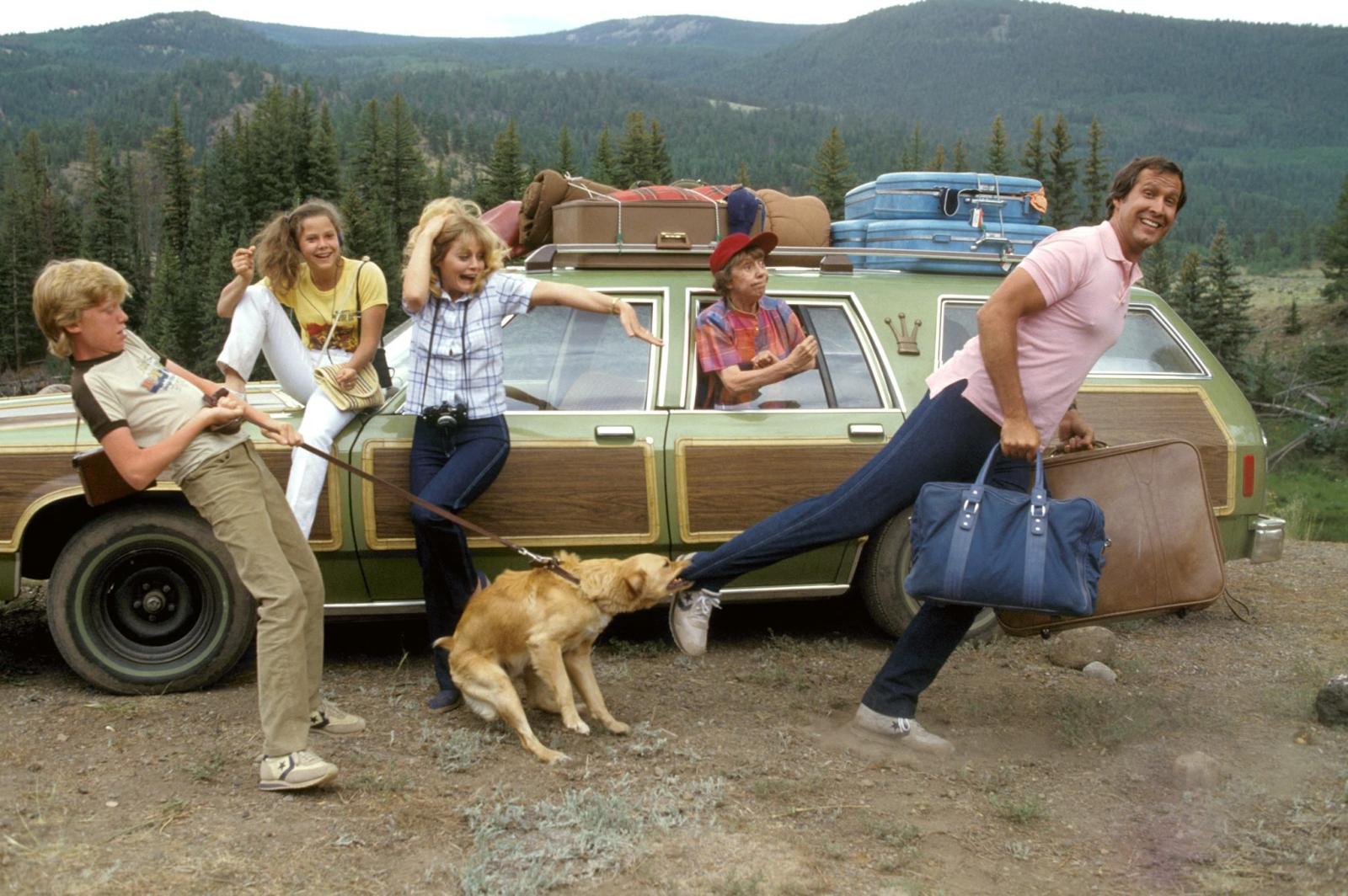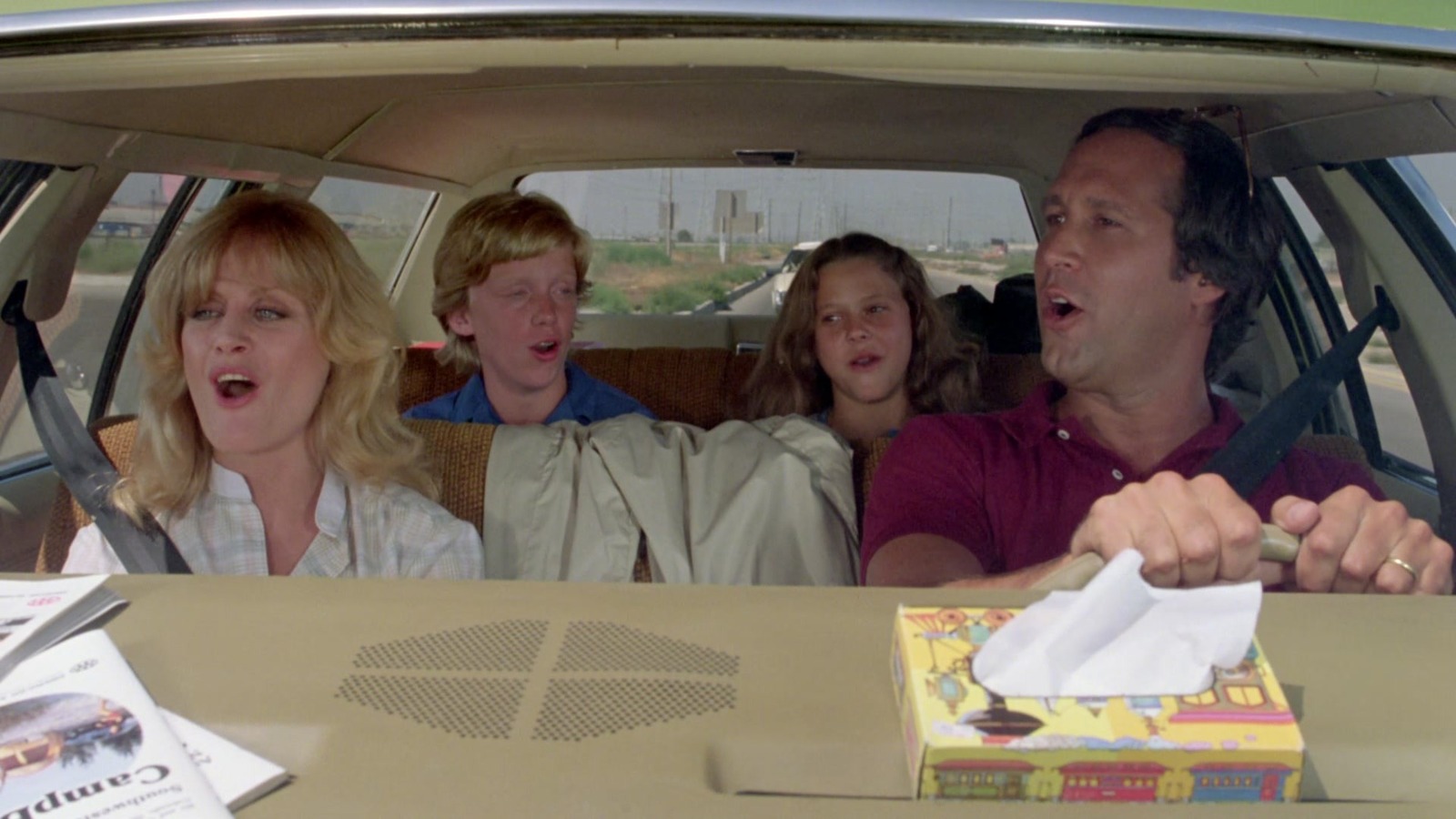National Lampoon's Vacation (1983): 20 Weird Facts You Didn't Know!

It was messy, mean, and barely made it past studio censors—but National Lampoon's Vacation ended up launching a billion-dollar franchise and cementing the Griswolds as America's most chaotic road trip family.
Written by John Hughes, directed by Harold Ramis, and led by Chevy Chase, the film was sharper than it looked—and harder to make than anyone expected.
From deleted endings and near-injuries to studio interference and casting regrets, here are 20 behind-the-scenes facts about the original Vacation—plus a bonus detail that proves even a foam moose can become a cult icon.
1. Chevy Chase Improvised the Dish Scene
Early in the film, Clark Griswold is drying dishes. What most viewers don't notice: he's not rinsing anything. He just wipes dirty plates with a dry rag and slides them back into the cabinet. Chase made it up on the spot. No music cue, no joke setup—just quiet, passive insanity.
2. The Poster Was a Parody of Epic Action Films
The original theatrical poster was painted by Boris Vallejo, known for Conan the Barbarian. It depicted Clark Griswold as a ripped action hero—shirt torn, racket raised like a weapon. The point wasn't to sell realism. It was to spoof the fantasy-adventure posters of the era and immediately signal the contrast between the image and the actual film.
3. Christie Brinkley Froze on Day One
Brinkley had never acted before. When the cameras rolled, she froze completely—no lines, no expression. Director Harold Ramis gave her time and worked with her until she found the rhythm. The red Ferrari scene that defined her role came later and changed everything. Her appearance became one of the most quoted parts of the film.
4. A License Plate Nearly Hit a Background Actor
During a gas station scene, Chase accidentally flung the Truckster's license plate while removing it. The metal piece nearly hit a background actress. You can spot the moment in the final cut—his reaction is real. The take stayed in.
5. John Hughes Wrote the Story During a Blizzard
Hughes originally published "Vacation '58" in National Lampoon magazine. He wrote it while trapped in his Chicago apartment during a snowstorm. It was darker, stranger, and ended with Clark shooting Walt Disney in the leg. Warner Bros. toned it down and changed the destination to "Wally World," but the original tone still shaped the entire script.
6. Paramount Rejected the Script for Being "Too Mean"
Producer Matty Simmons pitched the film to Paramount first. They passed, saying it was too episodic and too cruel. Warner Bros. picked it up instead, betting on the honesty of the satire. That risk paid off. The film made $61 million on a $15 million budget and revived the National Lampoon brand after several flops.
7. The Film Rescued the National Lampoon Brand
Vacation wasn't just a hit—it was a turning point. The magazine was fading. The brand had suffered two back-to-back box office failures. Vacation proved the Lampoon name could still pull in an audience, and it propelled Chevy Chase back to the top of the comedy box office.
8. The Griswolds Were Originally From Detroit

In the original story, the Griswolds lived in Detroit. For the film, the studio pushed for a change to Chicago, thinking it was more broadly relatable. Hughes agreed. The result: nearly every Hughes project that followed (Sixteen Candles, Ferris Bueller, Home Alone) was also set in Chicago.
9. Cousin Eddie Was Based on a Real Person
Randy Quaid based the character on someone from his extended family—complete with odd stares, conspiracy theories, and strange mannerisms. He played it straight, never winked, and made Cousin Eddie not just funny but slightly unnerving. The result was one of the most memorable supporting characters in the franchise.
10. Beverly D'Angelo Nearly Passed Out During the Shower Scene
The water heater on set was turned up too high, and the steam filled the room. Under hot lights, D'Angelo started to feel dizzy and lightheaded—but kept performing. Nobody noticed until after the scene was finished. What's now remembered as a breezy, comedic moment nearly ended with her blacking out.
11. The Dog Scene Almost Got Cut
The gag where Clark forgets the dog's leash and drives off with it still attached nearly didn't make it in. Warner Bros. executives wanted it removed, saying it was too dark. Hughes and Ramis pushed back, arguing that Clark wasn't malicious—just overwhelmed. They kept it, and it became one of the film's most quoted moments.
12. The Family Truckster Became a Cult Object
The Wagon Queen Family Truckster was deliberately designed to look terrible. Eight headlights, fake wood paneling, pea-green paint—it was everything wrong with American station wagons rolled into one. Fans embraced it. To this day, people still restore and drive replicas across the country.
13. The Original Ending Was Completely Different
In the original cut, the family doesn't make it to Wally World. Instead, they show up at Roy Walley's mansion and hold him hostage at gunpoint. Christie Brinkley was revealed to be Walley's daughter. The ending bombed in test screenings, and the studio reshot the finale at the actual theme park.
14. The Roller Coaster Screams Were Real
The park scenes were filmed at Six Flags Magic Mountain. The actors had to ride the roller coasters repeatedly to get enough footage. By the end of the shoot, they were visibly nauseous and physically exhausted. The screaming wasn't acting—it was real.
15. It's the Only R-Rated Film in the Franchise

While later installments went PG-13, Vacation kept its R rating. Not for language or sex, but for tone. Director Harold Ramis later admitted that some sequences—especially the racially stereotyped St. Louis scene—made him uncomfortable in hindsight. It was material carried over from the original Lampoon voice, and it didn't always align with his own.
16. John Hughes Quietly Walked Away
Hughes wrote Vacation, adapted it for screen, and stayed on to write European Vacation. But by then, he felt the focus had shifted too far from the original story—especially the perspective of Rusty. Hughes didn't make a scene. He simply stopped writing for the franchise and turned his attention to films about teenagers. It was the start of his true directorial career.
17. Chevy Chase Had a Tense Relationship with the Cast
While Chase carried the film, he was also known for being difficult behind the scenes. Several cast members later recalled moments of tension, sarcasm, and distance. Chase has acknowledged this in interviews, citing fame and ego. He specifically expressed regret over how he treated Anthony Michael Hall, who looked up to him during production.
18. Beverly D'Angelo's Career Was Changed Permanently
D'Angelo had a respected résumé before Vacation. After the film, she became instantly recognizable—but also found herself boxed into similar roles. She later said the part brought her security and visibility, but it also limited the types of roles she was offered going forward.
19. Rusty and Audrey Were Recast on Purpose
Every sequel brought in new actors for the Griswold kids. At first, it seemed like a mistake. Then it became a recurring bit. The filmmakers leaned into the absurdity, never acknowledged it, and treated the recasting as part of the franchise's chaotic charm.
20. "Holiday Road" Flopped—Then Became Iconic
Fleetwood Mac's Lindsey Buckingham wrote the song for the film. It didn't chart, barely got radio play, and was mostly ignored at release. But the song reappeared in every sequel, ad campaigns, and countless road trip playlists. It eventually became inseparable from the franchise—even though it was never meant to be a hit.